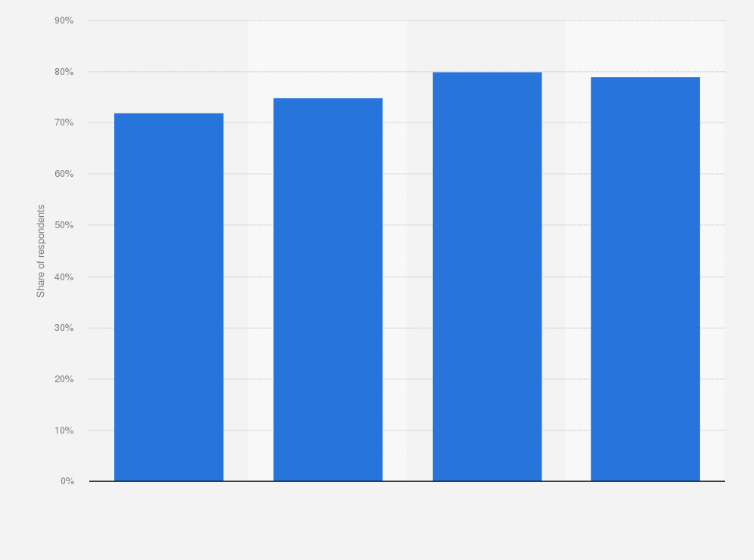U.S. consumers' grocery shopping list usage 2015, by generation
This statistic depicts the results of a survey conducted in 2015 by the Food Marketing Institute. U.S. consumers were asked if they typically make shopping lists when buying groceries. The findings present that 72 percent of Millennial shoppers create a list for their grocery shopping trip.
Grocery shopping - additional information
Consumers who shop with grocery lists are more likely to follow a healthy diet according to a study of shoppers in Pittsburgh, United States. RAND Health’s research findings claim that U.S. shoppers who frequently made grocery lists also made better food choices and had lower body weights. In 2016, the U.S. Department of Agriculture encouraged Americans to think about the meals they want to cook for the week and make a list before going grocery shopping. By doing so, people would buy only the things they need, make fewer shopping trips, and therefore, save time and money. It goes without saying that, having a well-planned grocery list makes shopping easier and more efficient.
According to the Food Marketing Institute, most U.S. consumers made grocery lists. In 2015, more than three-fourths of the respondents aged 37 years and older made lists before going shopping, particularly, the Baby Boomer generation. In addition to that, the most popular time for creating a grocery list was “during the week”.
Over the past five years, the U.S. weekly grocery expenditure fluctuated between 97.3 U.S. dollars to 105.5 U.S. dollars. In 2015, households in the United States had spent an average of 100.8 U.S. dollars on groceries per week. That year, the weekly average of grocery trips per household was 1.5.
Grocery shopping - additional information
Consumers who shop with grocery lists are more likely to follow a healthy diet according to a study of shoppers in Pittsburgh, United States. RAND Health’s research findings claim that U.S. shoppers who frequently made grocery lists also made better food choices and had lower body weights. In 2016, the U.S. Department of Agriculture encouraged Americans to think about the meals they want to cook for the week and make a list before going grocery shopping. By doing so, people would buy only the things they need, make fewer shopping trips, and therefore, save time and money. It goes without saying that, having a well-planned grocery list makes shopping easier and more efficient.
According to the Food Marketing Institute, most U.S. consumers made grocery lists. In 2015, more than three-fourths of the respondents aged 37 years and older made lists before going shopping, particularly, the Baby Boomer generation. In addition to that, the most popular time for creating a grocery list was “during the week”.
Over the past five years, the U.S. weekly grocery expenditure fluctuated between 97.3 U.S. dollars to 105.5 U.S. dollars. In 2015, households in the United States had spent an average of 100.8 U.S. dollars on groceries per week. That year, the weekly average of grocery trips per household was 1.5.






